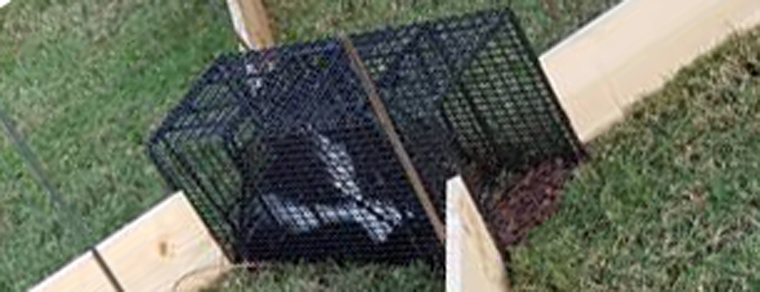-
info@aaanimalcontrol.com
Call us for help in your town
Humane Wildlife Education
Using One-Way Exclusion Funnels To Remove Skunks Without Trapping Them
Need skunk removal in your hometown? We service over 500 USA locations! Click here to hire us in your town and check prices - updated for year 2020.
There are many people who want to be as humane as
they can when they are dealing with pest animals,
and while trapping and relocation is one possible
options, the animals will not always survive. This
is why some people will look to try and exclude
the skunks by using exclusion funnels instead, as
it will mean the skunk simply needs to find a new
den, rather than having to adapt to an entirely
new habitat as well.

When Can You Use These Funnels?
The most important thing to remember if you are
trying to use exclusion funnels is that a female
skunk who has kits will not necessarily take the
babies with her when she leaves the den. This
means that if you are carrying out exclusion work,
you should avoid doing this in May, June and July,
when the baby skunks are going to be quite young,
and may not be able to leave the den, meaning that
they will die in the cavity the skunks are
occupying. Outside of this period, here are the
steps you should follow:
- 1. Finding All Of The Skunk's Entry Points
- 2. Sealing Most Entry Points
- 3. Installing The One-Way Exclusion Funnel
- 4. Final Repairs
Carry out a thorough examination of the area where the skunk is occupying, and try to identify all of the entry points. In some cases there will only be one, but make sure you find all of the access points, otherwise the skunk will just get back in through another hole.
Where there is more than one access point, make sure that you seal all of the entry points apart from the main one, and this can be done by using wire mesh, or simply filling in the hole with soil.
Once there is only one hole that the skunk can use to get in and out of the cavity, install a one-way exclusion funnel over the hole, and make sure that there are no spaces around the funnel. Monitor the area, and you should see that the signs of the skunk's presence should reduce after it has been excluded.
Once you are sure that the skunk has successfully been removed, the final repairs can be carried out, and for this you should remove the funnel, and fill in the hole completely. It may also be worth considering whether or not further amendments should be made to deter skunks from returning to the area.
How much does skunk removal cost? - get the lowdown on prices.
How to get rid of skunks - my main skunk removal info guide.


















